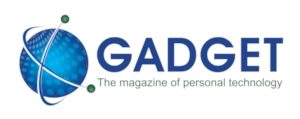Featured
It’s printing, Jim, but not as we know it
Selling printing services is not only about the hardware anymore, writes ARTHUR GOLDSTUCK
Share
- Click to share on Twitter (Opens in new window)
- Click to share on Facebook (Opens in new window)
- Click to share on LinkedIn (Opens in new window)
- Click to email a link to a friend (Opens in new window)
- Click to share on Reddit (Opens in new window)
- Click to share on WhatsApp (Opens in new window)
- Click to share on Pinterest (Opens in new window)
The seminal science fiction series Star Trek generated many catch-lines, like “The Prime Directive” and “Live long and prosper”. One of its most parodied lines, however, is Doctor Bones McCoy’s words to Captain Kirk on encountering an alien species: “It’s life, Jim, but not as we know it.”
That’s exactly the way one could describe the printer industry today. Every time an HP, Epson or Konica Minolta releases a new machine for this sector, one can sense the puzzled frowns of people taken by surprise that it still exists.
The difference is that it has evolved from a focus on paper to an emphasis on document management.
One of the first companies to spot that shift in the market, Japanese-headquartered Konica-Minolta, pioneered the concept of a dedicated printer company introducing its own software development division.
“We’ve always believed our role is solving problems for the customer, and not just to provide print, copy and scan solutions,” says Marc Pillay, CEO of the company’s South African division. “Our primary focus is multi-functional devices, but we always look at adding value to clients. Our real job is to assist in achieving a better return on investment.”
The proof of the pudding is that the local division is one of the biggest Konica-Minolta distributors in the world. The reason is simple: unlike most other countries, the South African operation has both a direct and indirect channel. That means it is able to supply companies through its reseller network, while also having a presence on the ground in the form of a dealer network across the country. That, in turn, has given it access to municipalities and other organs of state.
“Our value proposition is based on quality products, service and an unparalleled supply chain,” says Pillay. “When everyone was afraid to do business with government, we thrived on it. It comes from being located in areas where it’s easy to do business with us.”
One could call that the secret of success for existing demand. The coming era, however, will require an appreciation of the next big shifts in printing, says Pillay.
“We’ve seen the big shifts from analog to digital, from monochrome to colour, and from decentralisation to centralisation of printing. The next shift is unbundling printing into a hybrid approach, using both cloud and managed solutions. It’s all going to become subscription-based, and it will be print-on-demand. The high-end customers go into that very quickly, but we still have to cater for people who just do copying.”
Pillay believes that the opening of Microsoft’s Azure data centres in South Africa in March has already made a difference.
“Now you can scan from a device into Microsoft’s SharePoint online or Google Drive. It’s not about screen size anymore, but what you can do to make an impact.”
Where people don’t print, says Pillay, they’re absorbing documents digitally.
“We have to make sure that, where we lose the print, we are gaining the management of the scan, digitisation of the document or management of the workflow. Our income will come out of the workflow.
“Clearly, we’re not just focused on selling a piece of hardware anymore.”
- Arthur Goldstuck is founder of World Wide Worx and editor-in-chief of Gadget.co.za. Follow him on Twitter and Instagram on @art2gee
Share
- Click to share on Twitter (Opens in new window)
- Click to share on Facebook (Opens in new window)
- Click to share on LinkedIn (Opens in new window)
- Click to email a link to a friend (Opens in new window)
- Click to share on Reddit (Opens in new window)
- Click to share on WhatsApp (Opens in new window)
- Click to share on Pinterest (Opens in new window)
| Thank you for Signing Up |
















